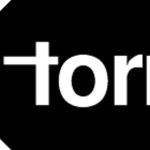What's in this article...
Those tremendously large roadside billboards that we drive past, which advertise everything from nearby restaurants to local real estate agencies, are still making an impact, even in our increasingly digital modern world.
Billboards can still be an effective marketing solution, but whether or not they will be a smart use of your marketing budget depends on the number of resources that you have at your disposal.
Let’s get started by looking into the value that billboards provide in order for you to better decide if they are the correct marketing tool for your small business.
Consider Billboard Posters
A billboard poster is a large sign that is implemented in crowded areas that are highly commuted. The goal is to get the most widespread exposure for the advertising message as possible.
Any form of large-scale signage, including billboard posters, can capture the attention of thousands of people on a daily basis if it is situated in the right location.
The exact size of your billboard poster depends on the advertising structure you choose. Typically they fall in the configuration of 10 feet high and 22 feet wide. Due to the smaller size of a billboard poster as compared to a gigantic traditional billboard, these posters can make your marketing campaign less expensive and easier to execute.
Due to the decreased size of billboard posters, they tend to be placed in more eye-level locations in cities or towns to make them easier for people to read. They also work really well for temporary campaigns, such as limited-time sales or upcoming events.
Wide Market vs. Niche Market
While you begin to delve into the ways in which you will spread out your marketing budget to get the most promotional bang for your buck, billboards should be a consideration to reach a wide or more niche market. Are you trying to reach a wide-open demographic of potential customers, or are you trying to zoom in on a smaller, specific audience?
Billboards are great for attracting a wide range of people because you won’t have much control over the interests of the folks that will see your stationary billboard and who will pay it the most attention. The most control that you will ever have over your billboard’s viewers is in choosing the city or town that it will be displayed in, the direct location that it will be situated at, and the duration of time that it will stay there.
In order to target a smaller, more specific audience, your billboard would literally have to be located somewhere that this group frequents on a regular basis. This is totally fine if your audience is college students, for example, and your billboard goes up near a popular university.
Focusing on potential consumers will have very particular needs and interests that work well online with content marketing and search engine optimization (SEO) to generate new leads and sales from written articles and videos that are immersed in the subject matter associated with your industry.
But remember, as much as the internet has pulled us deep into the digital realm, we are still traveling in vehicles and on foot and can still be pleasantly surprised by the catchy imagery and messaging of a billboard.
Billboards may have a heftier than many elements of online marketing methods, but traditional marketing mediums have the advantage of being low maintenance once that billboard is set up.
Costs of Smaller Billboards
Aside from the full-size traditional billboards, there are also many lower-cost options. The general estimated prices for a four-week time period can start at under $1000 for commuter train interior displays, restrooms, and bus stops that are non-digital in small to medium markets.
The price tag jumps up to under $10,000 for airport digital displays, shopping mall banners, and bus stops that are non-digital in high-income areas. Then for tens of thousands of dollars, you can get four weeks for airport banners and commuter train station dominations.
Digital Billboards or Classic Billboards
Lastly, when you are choosing whether to get yourself a digital billboard or a classic printed billboard, you should first figure out whether both of these types are available in the area you are targeting. The obvious difference between printed and digital ads is that the printed version can’t be altered once it goes up, while digital billboards can be changed and modified after the fact if needed.
Digital billboards are typically more expensive than old-school print billboards but have the added advantage of withstanding the wear and tear that comes with harsh weather and are lit up in the dark of the night for added visibility.
Printed signs, however, don’t rely on electric power. Therefore, they will remain up regardless of a power outage in the area. Also, printed signs will be the only brand message on the singular billboard, while digital billboards rotate between multiple clients every eight seconds or so.










